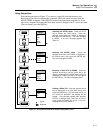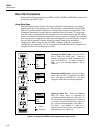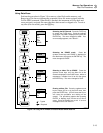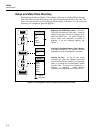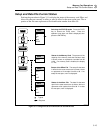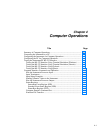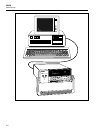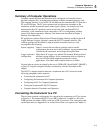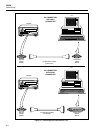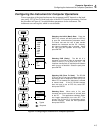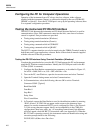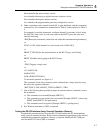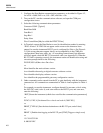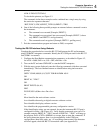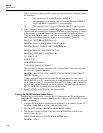
Computer Operations
Summary of Computer Operations
4
4-3
Summary of Computer Operations
Computer operations allow the instrument to be configured and controlled from a
personal computer (PC), including data exchanges with the instrument memory card.
The computer interface is via an RS-232 link between the instrument RS-232 port and a
PC serial COM port. The PC gives operation and configuration commands to the
instrument, and the instrument returns status signals (alarms, for example) and scan
measurement data. PC operations can be in real time with a dedicated RS-232
connection, or the instrument can be connected to a PC for configuration and then
removed for distant operations. Memory Card features are described in Chapter 3,
Memory Card Operations.
PC applications software Hydra Series II Starter Package (Starter) and Hydra Series II
Logger Package (Logger) (optional) operate the RS-232 computer interface. The
software packages are described in separate technical manuals; however, each
accomplishes the following:
Starter (supplied) Starter is a menu-driven software package used to transfer
configuration data from and to the instrument, log measurement data
collected by the instrument, and manage the acquired data.
Logger (optional)
configuration
Hydra Series II Logger is an optional full featured Windows based
and data logging package. It can communicate with two Hydras at
once and can also utilize telephone modems for remote
applications. A brochure with complete details is available.
Custom software can be developed by the user in GWBASIC, Quick BASIC (QBASIC),
or Quick C using the computer interface command set, which is described in this
chapter.
The RS-232 computer interface between a instrument and a PC is discussed in the
following paragraphs in this sequence:
• Connecting the Instrument to a PC
• Configuring the Instrument for Computer Operations
• Configuring the PC for Computer Operations
• Testing the Instrument/PC RS-232 Interface
• Computer Interface Commands and Operation
Connecting the Instrument to a PC
The two most common configurations for connecting the instrument to a PC are shown
in Figure 4-1. The instrument RS-232 port (DB-9 connector) is cabled to a PC serial
COM port that uses either a DB-9 connector or DB-25 connector. The connecting cable
can be fabricated (see Appendix D) or ordered from Fluke as an option (see Chapter 1).



